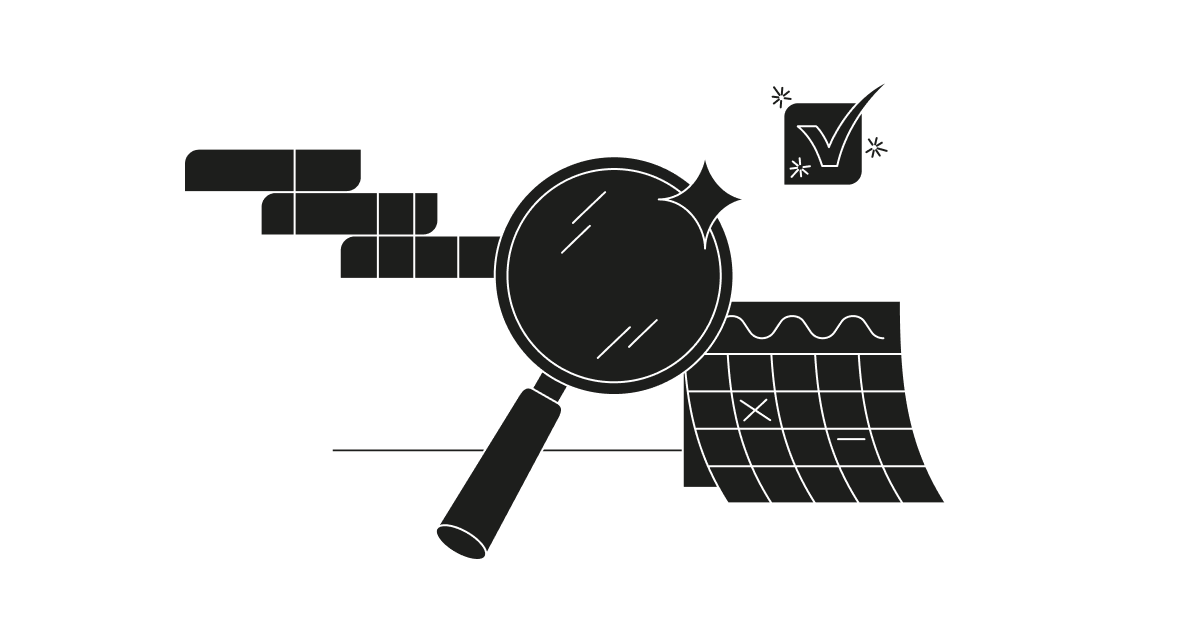
Testing out different tools and strategies is a great way to boost productivity, enhance project management practices, and make it easier for your team to stay on the same page. As you explore new ways to do so, you’ll probably come across the term Gantt chart. But what is it?
In short, a Gantt chart is a bar chart that lays out your project’s schedule plans over time. But to help you determine if it’s the right system for your team, we’ll dive into Gantt charts in more detail, when you should use them, and how to build your own.
What is a Gantt chart?
A Gantt chart is a horizontal bar chart that shows a project’s timeline, including tasks and activities that your team needs to complete to cross the finish line. Laying out your projects in this way provides your team with a visual overview of your project’s schedule, milestones that need to be hit, and a timeline.
The horizontal bars in the chart represent tasks, and how long those bars are depends on how much time the task will take to complete.
Additionally, Gantt charts usually include the following details about the tasks:
- Start date
- Duration
- End date
- Owner
These charts also shed light on how each task relates to each other, as well as how each team member’s work impacts the overall initiative.
When to use a Gantt chart
This timeline view is useful for a wide range of projects, but is commonly used for the following.
- Build and monitor complex projects: If your team is taking on a bigger project than usual, they’re going to have to manage more tasks. Gantt charts are useful in this scenario because project managers can easily visualize the project as a whole and break it down into smaller tasks when scheduling out the timeline.
- Manage task dependencies: Project delays happen — but if you’re able to visualize your work with a timeline, you can automate task dependencies and ensure the next task or project phase doesn’t kick off until the team member has all previous tasks completed.
- Keep track of project progress: This view also allows you to quickly adjust your project plan by tracking progress and milestones.
How to build your own Gantt chart
You can certainly tailor your Gantt chart to fit your specific project, but here are the basic steps necessary to get started.
1. Define the timeline
Your project should have a start and end date, and your Gantt chart should be a visual of your project with a clearly defined timeline. Additionally, you’ll likely have some follow-up tasks to complete with your client after completing the project, so it’s smart to include dates for these in your chart.
2. Add tasks with dates
Visualize your to-do list by ensuring each individual task has both a start and finish date. If you fail to do so, it could be more difficult to see the bigger picture. Adding clear start and end dates also helps your team understand exactly when they need to get started on the specific task and avoid getting blindsided by an upcoming due date.
3. Include dependencies
Larger projects often come with tasks that can’t kick off until others are finished. Keep your project running smoothly and your team fully informed by highlighting dependencies between tasks in your chart.
For example, your social media campaign kickoff may rely on another team member reviewing the content, which is also dependent on someone actually writing the content. Connecting dependencies between tasks helps the other team members keep track of when they can start their part of the project.
4. Add milestones
Milestones aren’t like tasks in a Gantt chart that have a start and end date — instead they’re fixed points in time. They act as checkpoints that show when bigger pieces of work are finished, give your team a way to prioritize tasks, and even provide moments to celebrate.
These milestones usually occur at the end of different project phases, but every project is different. A few examples of milestones can include:
- Meetings
- Approvals
- Check-ins
- Phase completions
5. Modify as needed
Wouldn’t it be great if your project went exactly as planned all the time? In reality, plans usually change, so your Gantt chart should be able to accommodate necessary modifications. Use a tool that allows you to update dependencies in real time so you can keep projects on track no matter what happens.
Whether or not you decide to implement Gantt charts into your project plans, it’s always important to understand your project scope, keep track of progress along the way, and utilize that data to better plan for the future.
Harvest can help make each step of the process easier — sign up for a free trial today to get started tracking time and planning with confidence.















